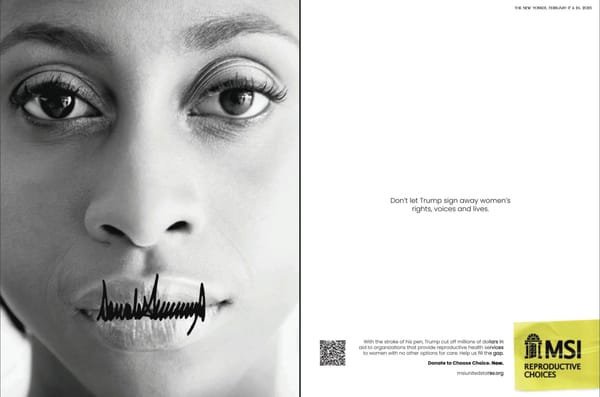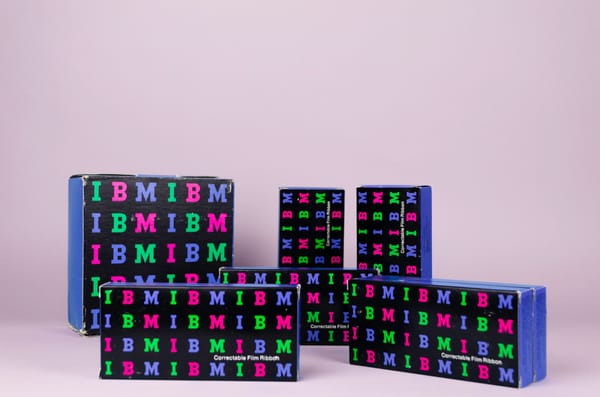Design is never neutral.
It informs, persuades, and provokes. At its core, design is about communication—about making people feel something and, ideally, do something.
When applied to social issues, design transcends aesthetics and becomes a tool for activism.
Take the MSI Reproductive Choices ad, published in The New Yorker in February 2025.
It features a black-and-white close-up of a Black woman’s face, her lips forcibly silenced by Donald Trump’s signature.
The composition is stark, intimate, and jarring.
Her wide, expressive eyes make direct contact with the viewer, but her voice—symbolized by her lips—is erased, replaced by the signature of a political figure who has impacted reproductive rights globally.
The Intent Behind the Design
This ad is a response to Trump’s reinstatement of the Global Gag Rule, a policy that strips funding from organizations providing reproductive healthcare services if they offer or even discuss abortion.
The visual metaphor is blunt: Trump’s signature does not just sign policy—it silences women.
This is what effective social issue design looks like. It bypasses logic and strikes at emotion first.
Why This Design Works
The MSI ad exemplifies the core principles of powerful activism design:
- Minimalism for impact – There are no unnecessary elements. The high-contrast close-up keeps the focus on the woman’s expression and the imposed gag.
- Symbolism that speaks volumes – A signature, normally a bureaucratic formality, transforms into a silencing force. It becomes a literal and figurative gag.
- Direct emotional engagement – The woman’s eyes create an undeniable connection, drawing the viewer into her experience.
These elements turn an ad into a statement, and an image into a movement.
Designers working on social issues must navigate a fine line. The MSI ad is effective because it presents an undeniable reality rather than an exaggerated spectacle.
It doesn’t distort facts—it visualizes the truth.
The ad doesn’t just criticize policy; it calls for action. The text at the bottom urges viewers to fill the funding gap left by Trump’s decision, reinforcing that awareness is only the first step—action must follow.
In an era where visuals dominate discourse, where misinformation can spread quickly, and where attention spans are fleeting, design isn’t just a tool for activism—it is the battlefield.
The MSI ad doesn’t just look good. It changes minds by making the impact of policy impossible to ignore.











